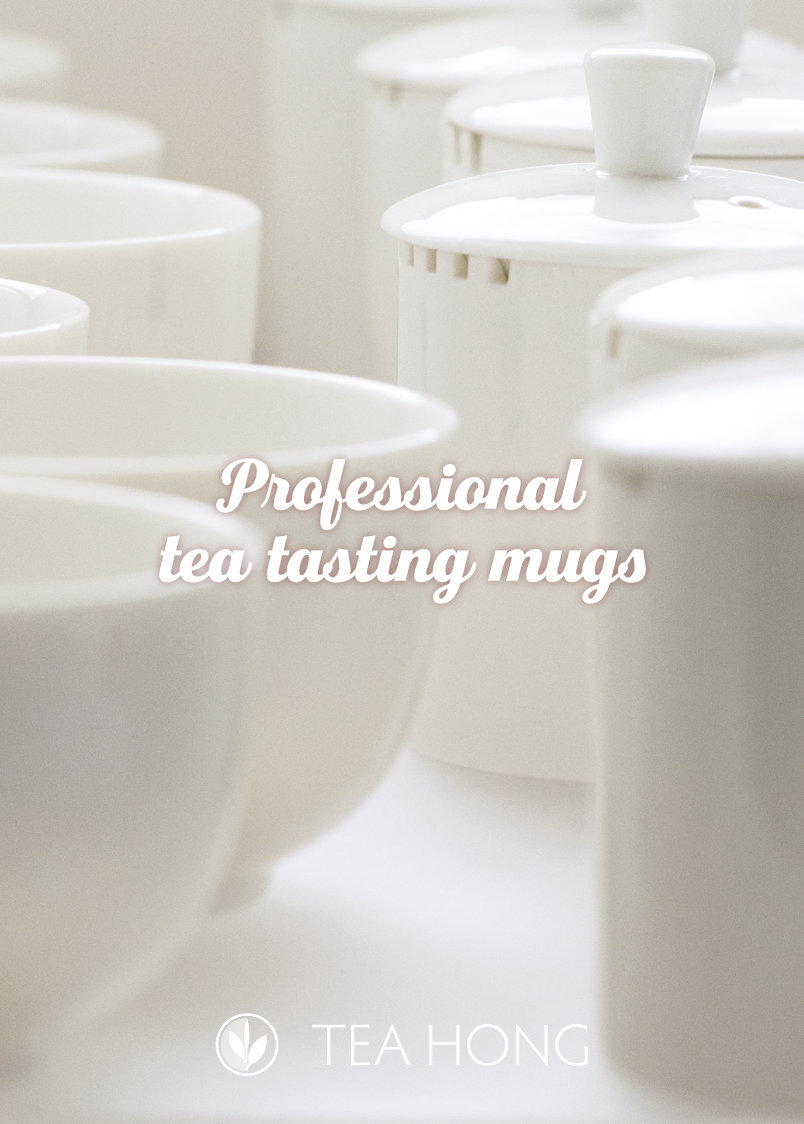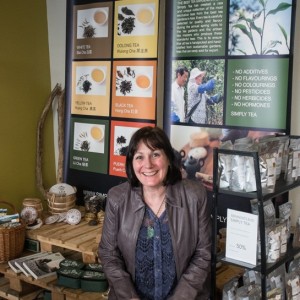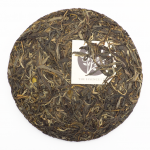From Crude Provision to Treasure: Origin of Dark Tea

Men laden with tea, Sichuan Province, 1908
Photo by Ernest H “Chinese” Wilson
This is a strong representation of how compressed tea had been transported in the old days. It could take weeks, if not months, for the straw-wrapped burden to arrive at the destination. Environmental elements and time came into play in determining the final quality of the tea.
origin of post-fermented tea
The first record of darkening tealeaves (1) from crude green tea was in the 11th century (2). It was a low cost alternatives (3) intended for export trading with people of various ethnic origins in and outside of the west and southwest of the Chinese borders. A few provinces in the southwest produced this sort of “low cost” dark colour tea. However, it is not sure whether the dark teas in history were done as the post-fermented teas today. Processed or non-processed tealeaves, wet or dry, can all turn dark when exposed to air and light, by way of oxidation, reduction, and/or microbe activities.
Certain tribespeople in Thailand, Myanmar (Burma) and Yunnan today would still boil to soften the tealeaves and roll them into small balls to dry and let them turn dark in the air. Some bury them in urns in underground. Tealeaves that have gone through microbe-induced fermentation is still a popular ingredient in Myanmar and Thai cuisines. It is said that they have been doing that for a long time. These areas border with Yunnan in China, traditional key dark tea production area. No one knows which way the influence had flown in the old days.
Various tea darkening techniques had been used in various Chinese provinces, but detail documentation of them were only made in recent decades. As to proper origins and original processes, I still have to find reliable documentation.
refuge for dark tea in a refugee city

Young Mother Carrying A Child On Her Back In The Market
Hong Kong Island, 1946
photo by Hedda Morrison
Post-war Hong Kong, ridden with changes and a huge influx of refugees, as well as opportunities and new energies, was a critical location for the realization of the creative energy of the Chinese civilization — most Chinese in other places were too busy with wars, power struggles and other in-fights. Control of induced post-fermentation for puer was only one of the innovations that has since become a tradition.
As for the development of the technique for the modern classic post-fermentation process, the most reliable and traceable oral history is that it was developed in Hong Kong (4) by tea merchants after WWII and popularized in the 1950’s, converting low-price border province productions — mostly Puer — into the singly most popular tea in Hong Kong in those days, and had made certain small tea hawkers wealthy. This aligns with what I have heard of from older generations long before the beginning of the recent market speculation.
This is understandable. Enterprising merchants witnessed the change of cheap air-darkened tea through the war years into something a lot more drinkable. They understood that they have to advance the “darkening” process to supply a rapidly expanding population which people were largely refugees. They might have observed the natural darkening of tea through exposed storage in humid basements, or further developed a traditional skill. Anyway, a routine for turning what originally had been harshly astringent, sun-dried coarse Puer tealeaves into a better drink was soon standardized in tea warehouses in this energetic small city, a border away, but a world apart, at the southern tip of Guangdong province.
From Crude Provisions to Treasures
The technique was soon taken across the border to producers in the province of Guangdong, where there were more land, more specialists, cheaper labor, and, the original centre of tea export. By the late 50’s, a few successful formulae had been developed using blends of leaves from different provinces and a process which details are still regarded today as a secret. The name Pu’er was kept and sales for export bloomed. In the 70’s, tea makers from Yunnan smelled the wind and came to Guangdong to study the process to take it back to their province with even more land and tea resources. Various other provinces were at the same time, advancing their technique, aiming at the export market in and through Hong Kong. Dark teas were popular only for export and ethnic groups at the borders in those days.
Today, dark teas can be leaves of any grades from various tea cultivars, boasting different growing origins, originality, making methods and packaged forms. Some dealers would also categorize teas that are to be darkened through exposure to the air, but without the post-fermented process, as dark tea. These teas need many years to tone down the excessive astringency and bitterness.

Business to business trading of pu’er discuses ( cha bing ) has been much greater than sales to consumers in recent years.
Buying tips
One marked visual difference of this category is its presentation in the compressed form. Before I go into this subject, however, I have to emphasize that the loose-leaf form is by far the most consumed one for actual drinking. The compressed forms are sold mostly for speculation, decoration and gift purposes.
There may be a misperception that the dark tea discus, as those seen in the teashop nowadays, are similar to those used by people of the Tang or Song Dynasties in China (7th~13th centuries), when tea was normally packed in the discus form. They are not. “Cake” tea intended for the “civilized’ people and imperial consumption in those days were steamed green tea, carefully washed, laid and moulded. They were green in colour and were drunk with a very different preparation than today.

Imperial Golden Tip Pu’er, aka Golden Tip Pu’er, or Gong-ting Pu’er 宮廷普洱 is a tippy fine leaf post-fermented dark tea. This one from 1997.
Marketing schemes by certain traders have led people to believe that some compressed tea discuses ( cha bing ) were of supreme quality and that all such tea develop better taste infinitely through time. A whole arsenal of prestige building campaigns involving books, exhibitions, lobbying and even sticking a cake tea into a space ship has constructed a “history” of such tea. Speculations for compressed tea have benefited the financial interest for some traders, and political interests for others. The price rose completely out of reasoning. A newly made tea is a fraction the price of a similar tea matured for a few years. However, it is, in any way, many times higher than 10 years ago. The inflated price you may be paying go to cartels, speculators, and factories who buy tealeaves from planters and small producers; the risen price has not benefited the tea planters and their workers.
The market of loose tea has been affected but not to such a large extent. Good quality ones are still within the reasonable range, when you find them. To tea traders, the better quality and better price are always still from smaller producers. To the consumers, it would be wise to buy from knowledgeable shops rather than from those stocking up for speculations.











